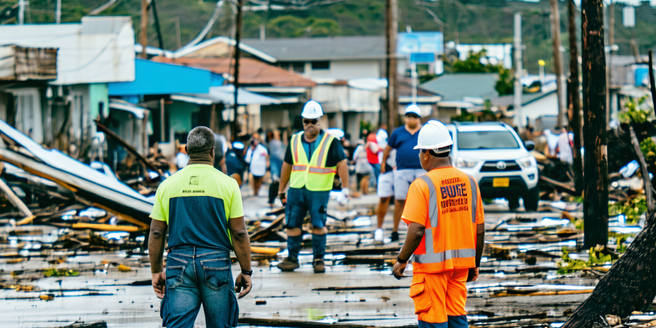
Assessing the Damage: Initial Steps in Recovery
After the hurricane has passed, communities must begin the painstaking process of assessing the damage. The initial steps in recovery involve a systematic evaluation of the affected areas, prioritizing the most critical damages. This includes identifying destroyed homes, infrastructure disruptions, and potential hazards like downed power lines. It is essential to work with local authorities and disaster response teams to ensure a coordinated effort. Assessing the impact also involves checking in with residents to understand their immediate needs. By meticulously documenting the extent of destruction, efficient resource allocation can be developed, ensuring the swift provision of relief materials. This structured approach lays the groundwork for more detailed recovery plans, stabilizing the community before reconstruction begins.
Organizing Community Support Efforts
In the wake of a hurricane, organizing community support efforts becomes a vital task. Neighborhoods unify to provide immediate aid and long-term support to those affected. Residents can form volunteer groups to distribute essential supplies such as water, food, and clothing. Local businesses often contribute by offering resources or shelter, fostering a sense of solidarity. Social media platforms can be utilized to communicate needs and organize relief drives efficiently. Community centers may serve as coordination hubs, facilitating information sharing and ensuring that volunteer efforts are strategically targeted. Through collective empathy and action, communities can address immediate challenges effectively, fostering a sense of resilience and empowerment among residents. As people come together, the foundation for sustained recovery and support is naturally bolstered.
Stories of Resilience and Survival
Amidst the chaos of a hurricane’s aftermath, poignant stories of resilience and survival emerge, painting a picture of human endurance. Individuals and families recount their experiences, highlighting moments of bravery and community support. Stories of neighbors rescuing each other, families creating makeshift shelters, and strangers offering indispensable assistance during evacuations instill hope. These narratives not only serve as a source of inspiration but also strengthen the communal bond. Sharing personal accounts through local media or community meetings can provide solace, letting those affected know they are not alone. By documenting these experiences, communities preserve their collective history, offering valuable lessons in perseverance and the importance of solidarity. These tales of human spirit uplift hearts, encouraging a unified approach to recovery efforts.
The Role of Local Authorities and NGOs
Local authorities and NGOs play a crucial role in the coordinated response to hurricane disasters. Their efforts ensure that immediate and long-term assistance reaches those in need. Initially, they are involved in disaster response operations, providing emergency services and resources. Local governments often lead the charge, working with state agencies to deploy rescue missions and set up shelters. NGOs complement these efforts by addressing specific needs such as mental health support and rebuilding services. They often have specialized expertise, offering targeted aid efficiently. Collaboration between authorities and NGOs is essential for optimized resource allocation, minimizing overlap, and addressing gaps in relief efforts. This partnership proves vital in stabilizing affected areas and laying the groundwork for sustainable recovery and development plans.
Looking Ahead: Rebuilding with Unity
As communities move past the immediate challenges of a hurricane, the focus shifts to rebuilding with unity. The rebuilding phase is an opportunity to reinforce structures to withstand future disasters better. Residents and local businesses collaborate to restore neighborhoods, creating stronger, more resilient infrastructures. Public meetings and workshops can be organized to gather input on rebuilding priorities, ensuring that the community’s vision is realized. Incorporating sustainable practices in the construction process can boost long-term resilience. By fostering a culture of inclusivity and collective effort, communities can rebuild not just physical spaces but also the social fabric that binds them. This integrated approach helps transform a disaster’s aftermath into a chance for renewed hope, promoting growth and unity among residents.
